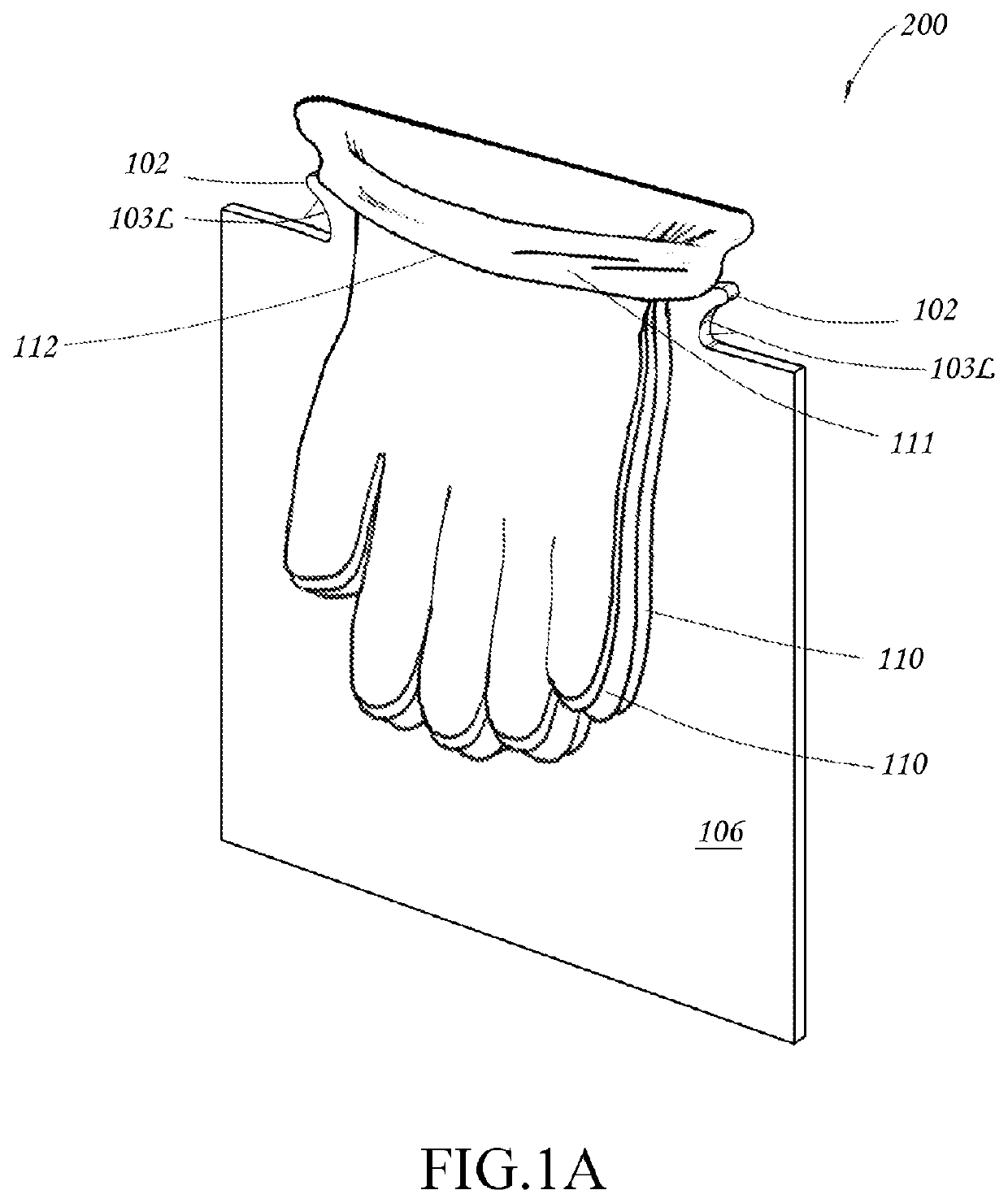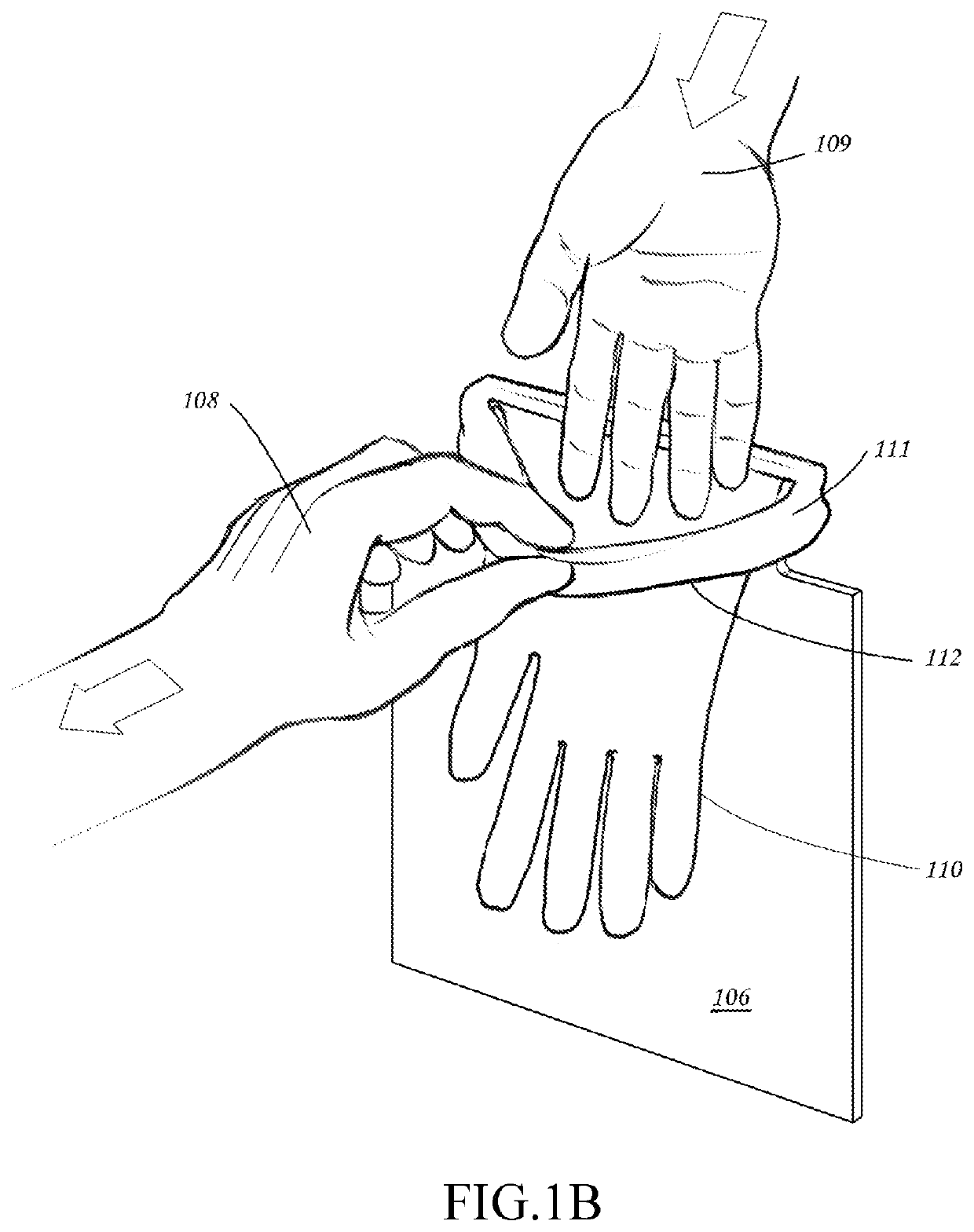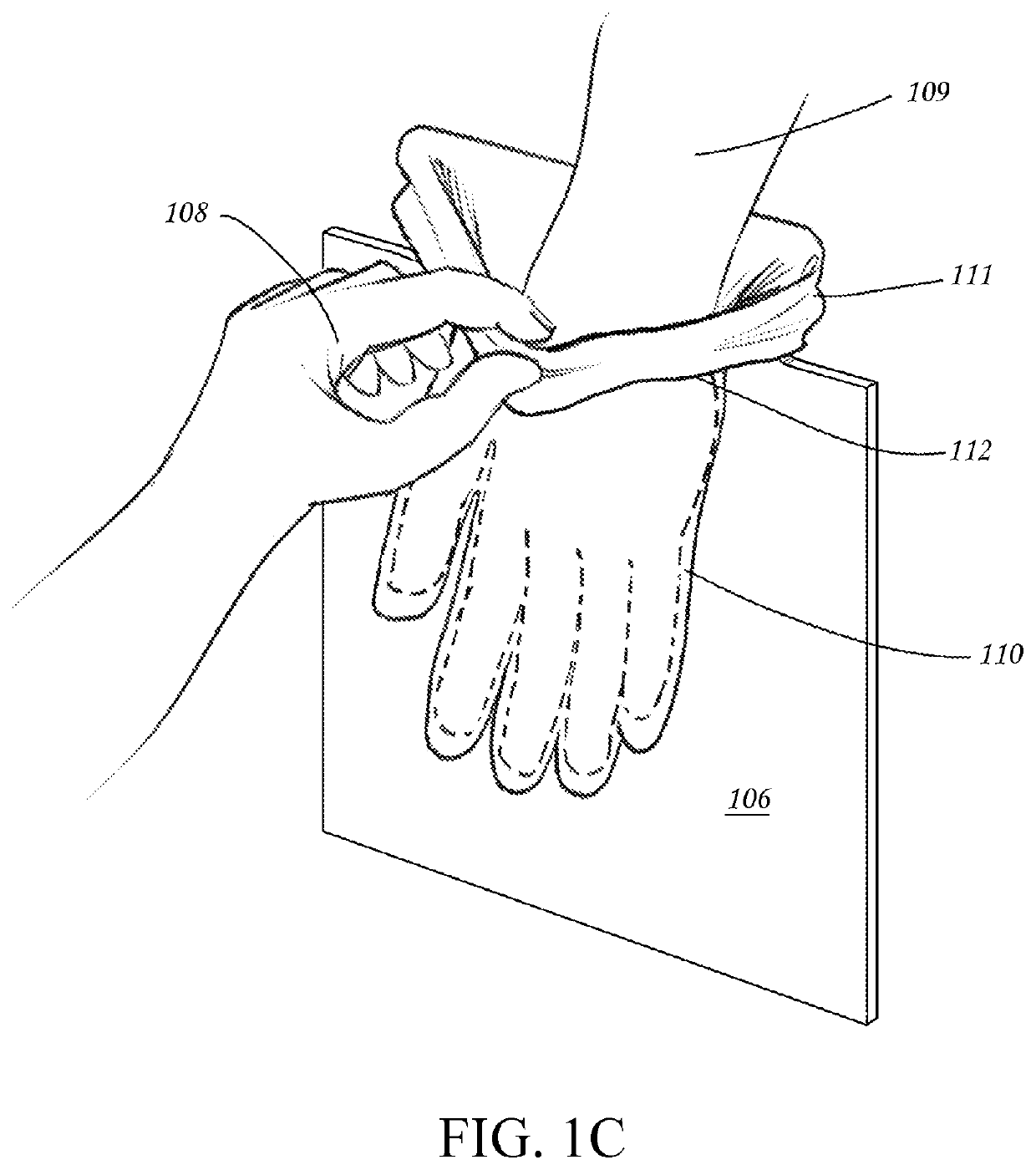Method and apparatus for disposable glove dispensing
a technology for disposable gloves and disposable gloves, which is applied in the field of disposable glove dispensing methods and apparatuses, can solve the problems of contaminating the outer surface of both gloves, boxed clean gloves becoming contaminated by users, and both gloves being likely to become unsanitary, so as to facilitate the dispensing of many gloves, convenient and efficient dispensing, and convenient location
- Summary
- Abstract
- Description
- Claims
- Application Information
AI Technical Summary
Benefits of technology
Problems solved by technology
Method used
Image
Examples
Embodiment Construction
[0040]This detailed description discusses various exemplary embodiments to support disclosure of the present invention. While these exemplary embodiments are described in sufficient detail to enable those skilled in the art to practice the invention, it should be understood that other embodiments may be realized and that modifications of structures, arrangements, or components used in the practice of the instant invention, in addition to those not specifically recited, can be varied or otherwise adapted to specific environments, manufacturing specifications, design parameters or other operating requirements without departing from the scope of the present invention and are intended to be included in this disclosure. As such, the detailed description herein is presented for purposes of illustration only and do not constrain the invention to specific limitations.
[0041]It is contemplated that many alternatives may become apparent as presented in disclosed arrangement of elements. For in...
PUM
| Property | Measurement | Unit |
|---|---|---|
| area | aaaaa | aaaaa |
| shape | aaaaa | aaaaa |
| areas | aaaaa | aaaaa |
Abstract
Description
Claims
Application Information
 Login to View More
Login to View More - R&D
- Intellectual Property
- Life Sciences
- Materials
- Tech Scout
- Unparalleled Data Quality
- Higher Quality Content
- 60% Fewer Hallucinations
Browse by: Latest US Patents, China's latest patents, Technical Efficacy Thesaurus, Application Domain, Technology Topic, Popular Technical Reports.
© 2025 PatSnap. All rights reserved.Legal|Privacy policy|Modern Slavery Act Transparency Statement|Sitemap|About US| Contact US: help@patsnap.com



